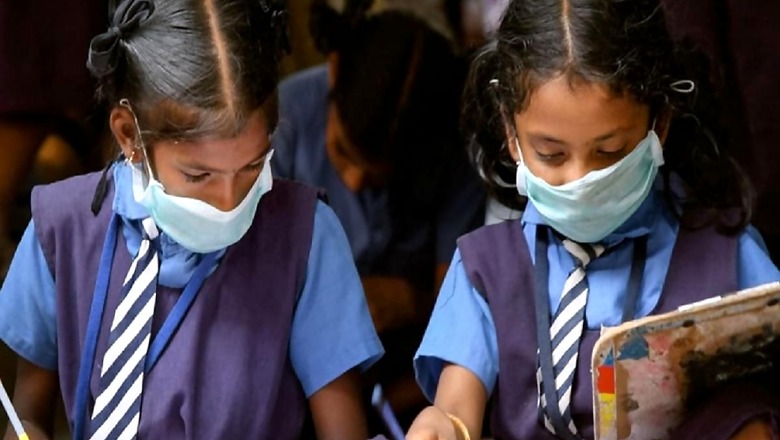
views
India finally has a new National Education Policy (NEP), the first in over three decades. Much has changed in the intervening years. A lot has remained the same. Despite the significant progress that India has made in the interim, the marginalised communities continue to lag educationally. While 87% and 74% of Kerala and Odisha’s richest complete higher secondary education, only 5-6% of the poorest in both states finish high school, shows the United Nations Educational, Scientific and Cultural Organisation (UNESCO)'s World Inequalities in Education database. Wealth remains a great determinant of educational opportunity irrespective of how progressive a state may be. Indeed, educational inequalities between India’s richest and poorest have, in some ways, widened over the past few decades.
The recent UNESCO Global Education Monitoring (GEM) report suggests that in low and middle-income countries, adolescents from the richest 20% households are three times as likely as those from the poorest to complete lower secondary school; students from the richest households are also twice as likely as those from the poorest households to reach minimum proficiency in reading and mathematics. This is a criminal waste of human resources.
The NEP’s fundamental principles include the commitment to recognise, identify, and foster the unique capabilities of each student, respect for diversity and local context, commitment to equity and inclusion as the cornerstone of all educational decisions. It has a more holistic view of inclusive education and robust emphasis on the education of persons with disabilities. There is, however, no mention of educational inequality or commitment to ensuring the highest, common standard of education of India’s young citizens irrespective of class, caste, and creed. Thus, the emphasis on equity is welcome, even if the exclusion of the class dimension as an analytic lens remains a blind spot.
As we understand the new policy, it might be time to understand how the policy’s provisions stack up against global best practices on equity and inclusion. Fortunately, the GEM report that was released a month back provides an interesting perspective on the issue. The exhaustive report offers some lessons for India’s journey towards greater equity in education.
Build the educational system on equitable foundations standing on a legal commitment to equity: This grounding in India is provided by the Right to Education (RTE) Act which provides the legal framework for the realisation of right to elementary education. This would need to be extended to include the focus on early childhood and secondary education introduced under the policy, thus providing a justiciable instrument for ensuring equity in the system.
Laws, policies and realities of implementation should not be out of sync: An example of this cited in the report is the phenomenon of rationalisation or merger of schools in India and the scope of it undermining the gains of the RTE era and beyond. The NEP endorses rationalisation, while suggesting the idea of a school complex as an alternative. The RTE Act provides for the creation of a school within one km from a child’s home; this legal entitlement has brought schools to hitherto unreached populations and ensured primary enrolment and completion. However, reaching remote, sparsely populated areas has meant the growth in the number of small schools with limited infrastructure, resulting in an ongoing process of rationalising education resource distribution leading to closure of schools in the most remote areas with the most disadvantaged populations. This has affected school distance for secondary and higher education, particularly for girls and learners with disabilities, potentially pushing them out of school. Research undertaken this year shows that learning levels are no different in small and larger schools, even after controlling for child, household and village attributes. One would hope that the government would go slow with the process of rationalisation in view of clear evidence that the policy inflicts “pain without gain” for India’s most marginalised communities.
Address systemic persistence of exclusion and avoid alienating learners: It is not enough to have a legal commitment to equity. We must address the everyday practice of exclusion in education systems, schools and classrooms. One such systemic practice of exclusion is the choice of language in the classroom. According to this year’s GEM report, 10-year-old students in middle and high-income countries who were taught in a language other than their mother tongue typically scored 34% below native speakers in reading tests. The policy’s commitment to instruction in the mother tongue and home language needs to be seen in this respect. The report speaks at length about the experience of Odisha in introducing multilingual education for tribal students. It remains India’s only state with a multilingual education policy and also has a large-scale programme, mentioned in the report, covering about 1,500 primary schools and including 21 tribal languages of instruction. If an educationally lagging and poor state can do it, so can many others. Overall, the invisibility of marginalised communities in curricula and negative stereotypes in textbooks would need to be addressed.
No-detention policy a critical step for ensuring inclusion: The GEM report finds that automatic promotion supports disadvantaged children if supplemented with remedial support. In 2017, India rescinded the no-detention policy under the RTE Act which provided the possibility of repetition of a student who failed a grade in classes 5 or 8 and over a dozen states and union territories have since moved away from the policy. However, the GEM report highlights that children who repeat a primary grade are less likely to complete primary school and more likely to leave school early. The GEM report highlights that “the no-repetition policy lowered dropout rates, with a larger decrease among primary school-aged children in states and UTs that implemented the policy after adoption of the RTE Act (Agarwal, 2020). This is important, as the probability of repeating remains higher for children who belong to scheduled castes”.
Deregulation and school choice promotes segregation and exclusion: One of the apparent assumptions in the NEP is that giving parents the freedom to make a relatively more informed choice while choosing their children’s school would incentivise schools to improve, thus improving the overall quality of education. However, evidence suggests that doing so frequently worsens systemic inequalities. The GEM report highlights that school choice exacerbates parental tendency to self-segregate, for instance in Chile (by income), in Denmark (between migrants and natives), in Lebanon (along sectarian lines) and in Malaysia (by ethnicity). Indeed, it is for this reason that home schooling is being banned in many countries in Europe as fostering exclusion. India would do well to heed this warning and work to ensure all schools improve instead of effectively further incentivising segregation in India’s already fractured education system.
Disparity in distribution of resources needs to be addressed: Equity and inclusion cannot be achieved without adequate funding and equitable resourcing of schools, especially with high intakes from marginalised communities. Adequate financing of education, ensuring the best teachers teach in the most difficult schools and introducing pro-equity policies like the midday meal scheme are critical steps. The NEP makes some particularly good suggestions in this respect like incentivising teacher posting in remote areas and proposing introduction of breakfast in schools. However, many more concrete plans are needed to ensure that the policy is financed.
The real test of the education policy would lie in its implementation, especially for India’s poor and the marginalised communities. Only time would show whether policymakers and implementers would heed the lessons of history.
(Anjela Taneja leads the work on education, health and inequality at Oxfam India. She is one of the founder members of the RTE Forum, India’s largest education network, and coordinates the Fight Inequality Alliance in India. Views expressed are personal)


















Comments
0 comment